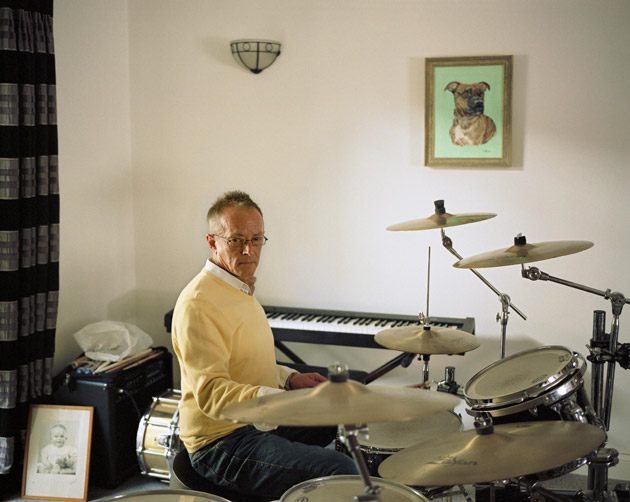A drummer is known for his skill and gear. And the hard rock/metal genre does not have many great drummers because of its demanding nature. But among the few great ones is Nicholas Bowen “Topper” Headon. This is one of the most reputable sticksmen in the history of drumming.
Often, it’s guitarists and vocalists who stay under the light to be seen. Drummers stay in the background with their instruments. Headon is one of the drummers who defies this seemingly ‘natural’ order of things on the stage. When he is holding the sticks, he makes sure everyone notices what he is doing. It is as if his drums “send personal messages to the audience, telling them to listen.”

Topper Headon was born in May 1955. The English drummer is best recognized for his work with the punk rock band Clash, which he joined in 1977. It was his famed drumming skills that got him a spot on this team. He was dismissed in 1982 due to his drug addiction. His bandmates gave Headon the name ‘Topper’ for his resemblance to Mickey, the Monkey from Topper comic.
Headon had most of his childhood in Crockenhill, Northwest Kent. He attended Dover Grammar School for Boys. His passion for drums started at an early age. He was always a jazz fan, with Billy Cobham as his greatest influence. In 1973, Headon got a chance to join the cult progressive rock outfit Mirkwood. He was with the group for a year and a half, helping him with major acts like Supertramp. Later, he joined another band, the “Temptations,” which played American R & B.
Primarily, Headon became a member of the Clash in 1977. He intended to establish his reputation as a great drummer before engaging in any other projects. However, he soon realized that the band has great potential and remained with them for nearly five years.
Headon was behind the throne for albums like ‘Give ‘Em Enough Rope (1978), The Clash (1979), and London Calling of 1979. There are also several landmark singles on which the drummer has left his stickprint. Headon was the composer of most of the music. He also played drums, piano, and bass guitar. His lead vocal on “Ivan Mees G.I Joe” from “Sandinista also contributed to his growth.

According to Clash singer/guitarist Joe Strummer, Headon’s drumming skills were a pillar. They saw some of the greatest moments when he was the timekeeper. However, his addiction caused tension between him and other band members, forcing him to leave in 1982 as they started their “Combat Rock” tour.
After leaving the band, Headon was on-demand as an experienced drummer. He was considered for the position in Mick Jones’s post-Clash band “Big Audio Dynamite. He also played in a short-lived band called Samurai. Over the next few years, he focused on recording solo albums, which became successful as well. He has continued contributing to the industry in a number of ways, including the cover version of the Gene Krupa instrumental “Drumming Man.”


